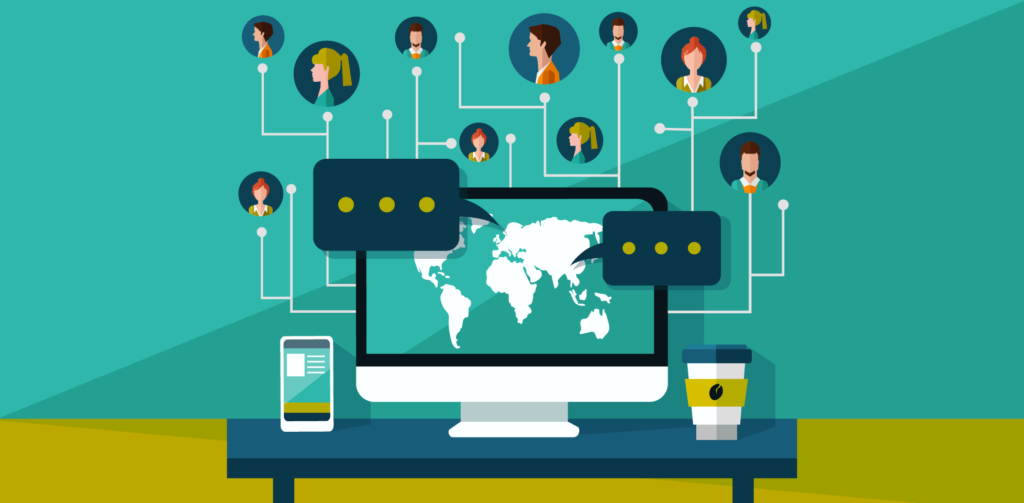
Here at Monitask we have always been fans of the teleworking model that allows people to work a few days a week or full time through a virtual office. Since the situation regarding Coronavirus changes every moment, and with the extra burdens of education-in-home and care of children, we know that this is easier said than done. Now that working from home is a reality for most of us, we have compiled a series of resources to help you adapt to your new work-from-home schedule.
Dealing With Your Feelings
First of all, it is important to understand that working from home can arouse many emotions. For some, it can be a challenge to get used to the lack of human interaction or the inability to understand the tones and reactions of colleagues without involving facial expressions or body language. For others, it may be difficult to get motivated, stay focused, or complete tasks. You may also be affected by a combination of isolation, concern about what is coming with the Coronavirus and/or generalized anxiety of the moment.

Your feelings are valid. Make room for them. Take the time you need to think about the emotional reactions. As you try to adjust to working from home, you may have to use coping mechanisms that you have used and that have helped you deal with change in the past. Consider your reaction to isolation, stress, different communication styles, and other things that may challenge you while working from home during a pandemic. Once you have identified these areas, think about what might help you deal with them: a scheduled walk-through? or asking colleagues for more video calls to consult? Does assigning a specific space to work allow you to log on and off from work? Some people find it helpful to listen to environmental sounds or have their favorite TV show in the background (try not to put the news in the background because it can cause stress). Whatever works, take the time to figure out what you need to do to be more successful. Your colleagues are probably looking for the same thing, too, so if you feel comfortable, share your strategies and resources with them.
Another question to think about is whether you work from home together with other people, such as family (including children) or housemates. Since home is the office, there are everyday situations that can be stressful and irritating. For one of us, a housemate who left the house in a hurry to go to work and left a sink full of dishes to put in the dishwasher when she returned from work. Normally, the dishes in the sink are no reason to get irritated, but it became a stress trigger once the house became the office and it was there all day and every day. This is where communication becomes a key factor. Be clear about what you are experiencing; communicate the core of the issues and listen to the answers. Try to come to behavioral agreements that work for everyone involved.
In the age of the Coronavirus, you and your partner(s) may find yourself working from home, which means you have no individual space in your relationship. Talk about your needs for time alone, about how work breaks might be, and how you want to communicate to keep the relationship going while you are locked under the same roof together all day, every day. Zora Magazine published an article about this that might be helpful. If you’re going to work from home with children who you also have to educate, that’s another story.
Breaks And Breakfasts
Our suggestion is to use the time it would take to get to work to start the day with breakfast and family time. We won’t tell you to dress like you’re going to work because we don’t always do that and it would be a cliché, but we do suggest taking off your pajamas to feel like the day has begun. Maybe you can invest in a nice robe that looks like a blazer or other kind of clothes so you can be comfortable but look professional during those video calls. Showering and changing your clothes will make you feel like you have time in the morning before you start the first call of the day. Block out those morning hours so that it is known that you’re not available during that time. Take breaks during the day-the equivalent of the time you would use at the office to take a walk or look for snacks. Breaks of 15 or 20 minutes are fine. Drink plenty of water and eat your meals outside the ‘work space’.
Tip: Make virtual appointments for lunch or coffee with your colleagues or friends so they can connect and share time with others outside of the projects they share.
Stick To A Schedule And Structure
Just because there are no colleagues to distract you doesn’t mean there aren’t a million other distractions – a TV show, people and pets looking for your attention, or just staying in bed all day. It is important to take breaks (and we’ll talk about that in a moment), but it’s important to create a schedule and stick to it. The Management Center proposes to use “work blocks” in the calendar, which translates into a specific time to work on specific tasks and projects, and work on that alone. Plan small, achievable goals for each day so you don’t get overwhelmed. Find a pace that works for you – do not overwhelm yourself, it’s easy to do that. Some people schedule blocks of work to check emails, write, schedule activities, to do administrative activities and make sure they get done. Working from home we suggest that you schedule work blocks of tasks that have a deadline, and if you can, lock yourself into a quiet room without human or pet distractions. We know that this is not always possible (especially with children), so do what you can and prioritize.
Other people are using strategies such as the Pomodoro Technique, in which you work on a single activity for 25 minutes. Its name comes from a kitchen timer. Some people install applications on their browsers or phones. If you do a search, you find a lot. Personal time tracking is always an option
Having structures is often key to ensuring that those living with depression can stay on task, while for others it is about organizing to finish a project. Here are some other tips to make sure you finish what you need to do.
Setting The Boundaries
One of the most important things about working from home is setting boundaries, both with yourself and with others. Working from home means that you don’t have to transport yourself between work and home space and perhaps look to “stay in the office” longer than you normally would. Set hours for work and stick to them as much as you can. Of course it’s okay if you need to work after hours if it works for you, your family, and your mental health, but try not to work too hard so you can still spend time with your family and have time for yourself.
Turn off your computer when you are done working and move out of the work area so you can have a physical separation between the work space and the home space. Tell your colleagues what your working hours are so they know when you have “left the office” and are not available for non-emergency matters. Likewise, negotiate boundaries with those who live in your work space. If you need “do-not-miss” moments, let them know so they don’t bother you with random questions while you’re trying to write something, or so they don’t yell while you’re in a webinar. Nothing is foolproof, but communication helps.
Prepare Your Space
When you work from home, it is important to find a space where you can “go to work” and physically have boundaries between your work and your personal life. If you can, invest in a good chair where you can sit comfortably for long hours. In an ideal world, your organization would offer to fund your work space at home, but we know that this may not be possible under the circumstances. If you feel comfortable, ask them what options they have to support the transition to working from home. Also, it’s good to switch spaces – do some projects at the desk, some from the couch, some from a favorite chair, and take calls that don’t require notes while you’re walking around. It’s important to get as much movement as possible.
A lot of blogs say you don’t work from bed, but honestly, we’re not going to tell you the same thing. If that’s where you feel most comfortable, work from there. We do that sometimes. We think it’s important that you create a space to work so that you can concentrate, your back is supported, and you have a place for your notebook, pens, agenda, and other materials.
Other suggestions:
- Install a second monitor so you’re not watching your laptop screen all the time and forcing your view.
- Use a mouse and keyboard other than the one on the laptop so you don’t hurt your hands.
- Keep a dedicated and separate space for all your papers, books and other materials so they are not scattered around your house.
- Invest in pens you like, sticky notebooks and a good diary.
- If you can, put your workspace near a source of natural light or a window so you can get some fresh air and some sunshine.
- Put a plant-Succulents are wonderful because they don’t require too much attention.
Communicate With Your Colleagues
We have mentioned this before, but we will say it again: communicate with your colleagues. When you work virtually, your colleagues can’t see if you’ve moved from your desk for a moment because you’re having a hard day not taking a nap or eating. Distance can lead to misunderstandings and isolation can cause them to lose sight of the overall goals. It is important that you continue to build trust between colleagues. Sometimes it is assumed that not having a response from a colleague means that they are not working, always put compassion first. Use Slack and shared calendars to proactively communicate deadlines, workloads, or if you need some “space” during the day.

A dot at the end of a sentence can be misinterpreted and create all kinds of confusion. Use emojis and choose to communicate clearly and express yourself more deeply so that between colleagues you can see beyond, know how everyone feels and not assume things. Instead of assuming things about how someone feels or what they are thinking, ask each other direct questions to get direct answers.
Tip: If you are working on a complicated issue or there are confusing email interactions, talk on the phone or have a video call with your colleagues so that everyone is on the same page.
Here you can find some tips on managing virtually, running virtual meetings, why remote work can be good for nonprofits, how to navigate new remote jobs under Coronavirus and answers to many questions about teleworking.
This time is difficult for everyone, we adjust, navigate the ways to support our families, deal with an ever-changing world, stress and anxiety, and the everyday work. Remember that you are doing your best and doing your best to figure out what works for you.


